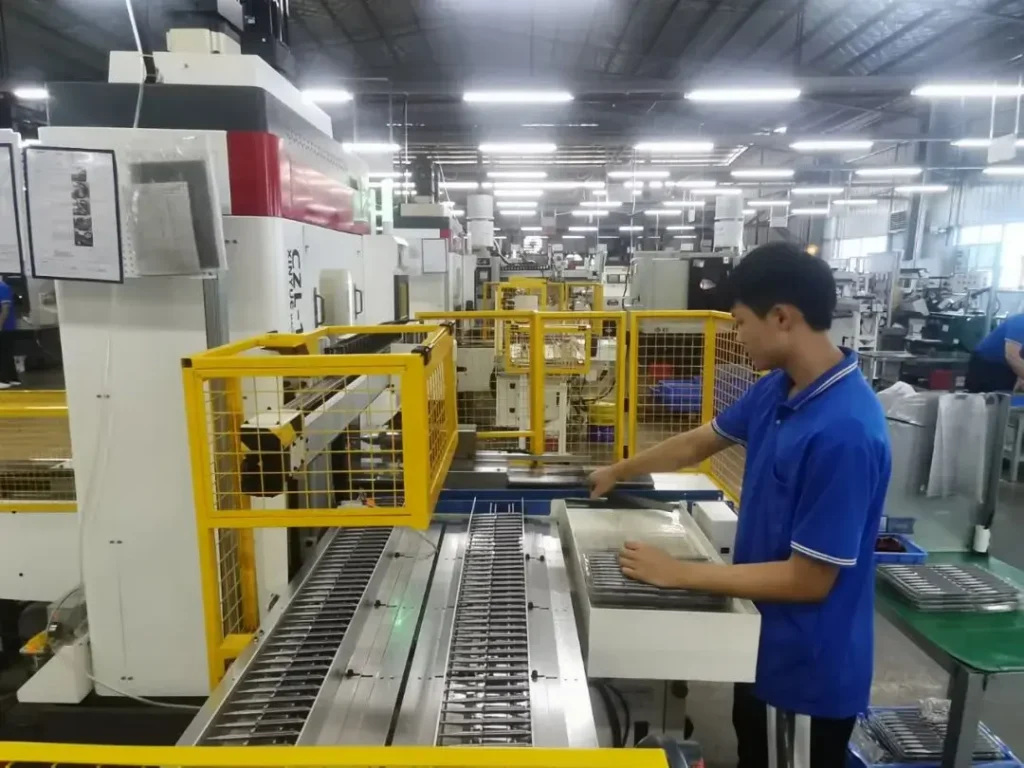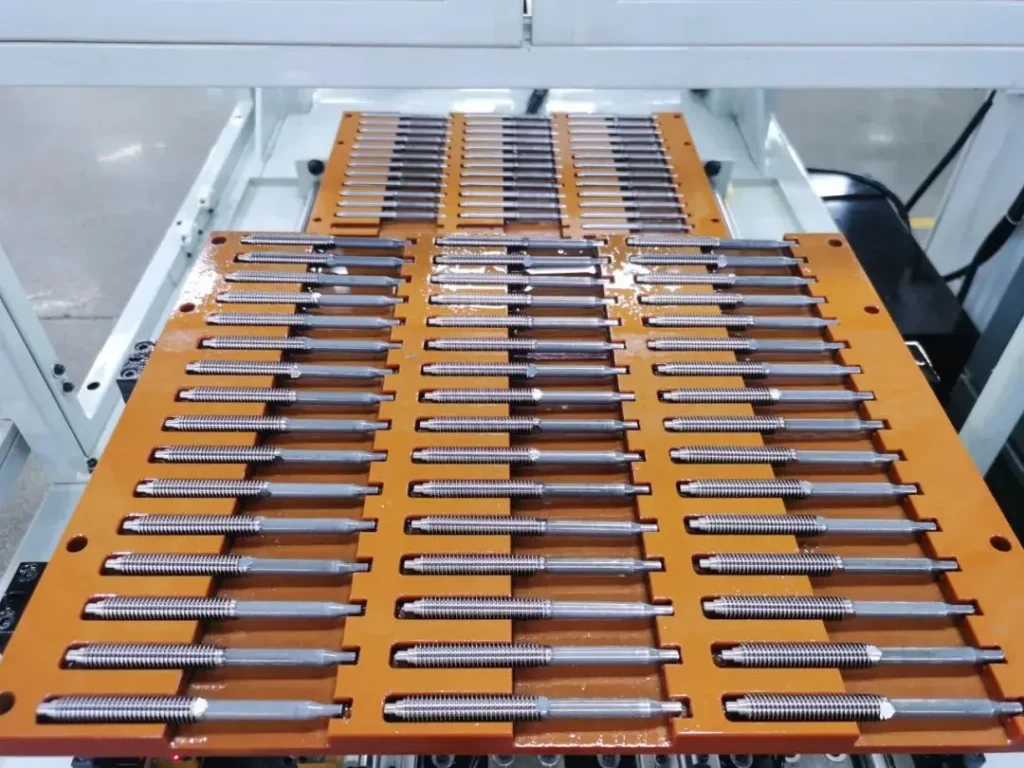High-Quality ACME Threaded Products | Precision, Durability, and Performance
When it comes to mechanical components, ACME threaded products stand out for their precision, durability, and performance. Whether you are in the manufacturing industry or involved in DIY projects, understanding ACME threads and their applications can significantly enhance your work’s efficiency and reliability. In this article, we will delve into the intricacies of ACME threaded products, their types, applications, and advantages, while addressing common questions.
What Does ACME Stand for in Threads?
ACME threads are named after the ACME Manufacturing Company, which standardized this thread profile. The ACME thread form is known for its 29-degree thread angle, which provides a strong, durable, and efficient threading system ideal for power transmission and heavy-load applications.
What is an ACME Threaded Rod?
An ACME threaded rod is a long, straight metal rod with ACME threads running its length. These rods are essential in various mechanical applications, such as lead screws for machinery, linear actuators, and jacks. They offer superior load-bearing capacity and reduced backlash, making them a preferred choice in precision machinery.
Types of ACME Threaded Products
ACME threaded products come in various forms, each designed for specific applications. Common types include:
Standard ACME Threads: Widely used for general-purpose lead screws.
Stub ACME Threads: Have a shallower depth and are used where space constraints exist.
Centralizing ACME Threads: Designed to reduce backlash by ensuring more accurate alignment.

ACME Thread Chart and Dimensions
Understanding the dimensions of ACME threads is crucial for selecting the right product for your needs. Here is a detailed ACME thread chart:
ACME Thread Dimensions
- Pitch Diameter: The diameter of the thread at which the width of the thread and the space between threads are equal.
- Thread Height: 0.5 x Pitch (The height from the root to the crest of the thread.)
- Thread Angle: 29 degrees (The angle between the sides of the thread measured in an axial plane.)
- Lead: The distance a nut will travel parallel to the screw axis in one revolution.
- Root Diameter: The diameter at the base of the thread.
ACME Thread Sizes (INCH):
| ACME Thread Sizes (Inch) | Pitch Diameter (inch) | Major Diameter (inch) | Minor Diameter (inch) | Thread Height (inch) | Thread Angle |
| 1/4″ – 16 TPI | 0.2366″ | 0.2500’’ | 0.2233’’ | 0.0125″ | 29 degrees |
| 3/8″ – 12 TPI | 0.3481’’ | 0.3750’’ | 0.3218’’ | 0.0260’’ | 29 degrees |
| 1/2″ – 10 TPI | 0.4596″ | 0.5000’’ | 0.4203’’ | 0.0400″ | 29 degrees |
| 5/8″ – 8 TPI | 0.5721’’ | 0.6250’’ | 0.5178’’ | 0.0625’’ | 29 degrees |
| 3/4″ – 6 TPI | 0.6846″ | 0.7500’’ | 0.6153’’ | 0.0833″ | 29 degrees |
| 1″ – 5 TPI | 0.8987’’ | 1.0000″ | 0.8012’’ | 0.1250″ | 29 degrees |
| 1-1/4″ – 4 TPI | 1.1360″ | 1.2500″ | 1.0239’’ | 0.1875″ | 29 degrees |
| 1-1/2″ – 3 TPI | 1.3865″ | 1.5000″ | 1.2396’’ | 0.3333″ | 29 degrees |
| 2″ – 2 TPI | 1.9375″ | 2.0000’’ | 1.8015’’ | 0.5000″ | 29 degrees |

ACME Thread Sizes (Metric):
For metric sizes, the dimensions vary similarly, ensuring compatibility with international standards as below:
| ACME Thread Sizes (Metric) | Pitch Diameter (mm) | Major Diameter (mm) | Minor Diameter (mm) | Thread Height (mm) | Thread Angle |
| 6 mm – 3 mm Pitch | 5.0 | 6.0 | 4.0 | 1.5 | 29 degrees |
| 10 mm – 2 mm Pitch | 9.0 | 10.0 | 8.0 | 1.0 | 29 degrees |
| 12 mm – 4 mm Pitch | 10.0 | 12.0 | 8.0 | 2.0 | 29 degrees |
| 16 mm – 5 mm Pitch | 14.0 | 16.0 | 12.0 | 2.5 | 29 degrees |
| 20 mm – 4 mm Pitch | 18.0 | 20.0 | 16.0 | 2.0 | 29 degrees |
| 25 mm – 5 mm Pitch | 23.0 | 25.0 | 21.0 | 2.5 | 29 degrees |
| 30 mm – 6 mm Pitch | 27.0 | 30.0 | 24.0 | 3.0 | 29 degrees |
| 35 mm – 6 mm Pitch | 32.0 | 35.0 | 29.0 | 3.0 | 29 degrees |
| 40 mm – 7 mm Pitch | 36.5 | 40.0 | 33.0 | 3.5 | 29 degrees |
| 45 mm – 8 mm Pitch | 41.0 | 45.0 | 37.0 | 4.0 | 29 degrees |
| 50 mm – 8 mm Pitch | 46.0 | 50.0 | 42.0 | 4.0 | 29 degrees |
| 55 mm – 9 mm Pitch | 50.5 | 55.0 | 46.0 | 4.5 | 29 degrees |
| 60 mm – 9 mm Pitch | 55.5 | 60.0 | 51.0 | 4.5 | 29 degrees |

ACME Thread Types and Materials
ACME threads are available in various materials to suit different applications:
Steel (Carbon, Alloy, Stainless) ACME Rod: Offers excellent corrosion resistance and durability, used in heavy-duty applications.
Brass ACME Threaded Rod: Known for its corrosion resistance and non-sparking properties, used in environments where non-rusting materials are required.
Aluminum ACME Threaded Rod: Lightweight and resistant to corrosion, used where weight is a critical factor.
Plastic (Acetal, Nylon) ACME Threaded Rod: Low friction, Used in lightweight and non-conductive applications.
Applications of ACME Threaded Products
ACME threaded products are utilized in a wide range of applications, including:
- Lead Screws: Used in machines to translate turning motion into linear motion.
- CNC Machines:Precision machinery that uses lead screws for accurate movement control.
- Jacks and Lifts: Used to lift heavy loads with mechanical advantage.
- Linear Actuators:Devices that convert rotational motion into linear motion.
- Presses: Used in manufacturing to shape or cut materials.
- Valve Stems: Used in valves to open or close the flow of fluid.
- Garage Door Openers: Used to translate the rotational motion of the motor into the linear motion needed to open or close the door.
Advantages of ACME Threaded Products
ACME threaded products offer several advantages:
High Load-Bearing Capacity: Suitable for heavy-duty applications.
Reduced Backlash: Ensures precision in motion control.
Durability: Resistant to wear and tear, providing a long service life.
Frequently Asked Questions
What is the Difference Between ACME Thread and Standard Thread?
ACME threads have a 29-degree thread angle, which is broader and flatter compared to the 60-degree angle of standard threads. This design provides better load distribution and reduces wear.
What Size Are ACME Threads?
ACME thread sizes range from small diameters suitable for light-duty applications to large diameters for heavy machinery. The sizes can be measured in both inch and metric units.
Why is it Called ACME?
The term “ACME” originates from the Greek word “akme,” meaning the highest point or peak. It signifies the superior quality and performance of these threads.
What is the Advantage of ACME Thread?
ACME threads offer higher load-bearing capacity, reduced backlash, and greater durability compared to standard threads, making them ideal for demanding applications.
What Are the Disadvantages of ACME Thread?
One disadvantage is that ACME threads can be more challenging to manufacture and may require specialized machinery. Additionally, they may not be suitable for high-speed applications due to increased friction.
What is the Difference Between ACME Thread and Trapezoidal Thread?
While both have similar profiles, trapezoidal threads are often used in Europe and have a 30-degree thread angle. ACME threads are more common in the U.S. and have a 29-degree angle.
What is the Difference Between ACME Thread and Lead Screw?
ACME threads are a type of lead screw, but not all lead screws have ACME threads. Lead screws can have various thread profiles, including ACME, trapezoidal, and square threads.
What is the Full Form of ACME?
ACME is not an acronym but a term denoting peak quality and performance.
What is the Origin of ACME Thread?
ACME threads were standardized by the ACME Manufacturing Company to provide a more robust and efficient threading system.
Why Are ACME Threads 29 Degrees?
The 29-degree thread angle provides a balance between strength and ease of manufacturing, offering superior load distribution and reduced wear.
What Does ACME Mean in Programming?
In programming, ACME often refers to tools or libraries that are considered top-notch in quality and performance.
Conclusion
ACME threaded products are essential components in numerous mechanical and industrial applications. Their precision, durability, and performance make them a preferred choice for engineers and manufacturers. By understanding the types, dimensions, materials, and applications of ACME threads, you can select the right product for your needs and ensure optimal performance in your projects.
For more detailed information, including a comprehensive ACME thread chart PDF and calculators, consult Welleshaft.
Jinan Welle Metal Products Co., Ltd (Welleshaft)
Website: www.welleshaft.com
Email: [email protected]
Phone: +86-156-5017-9596
Explore our range of durable and reliable ACME Threaded Products today!

